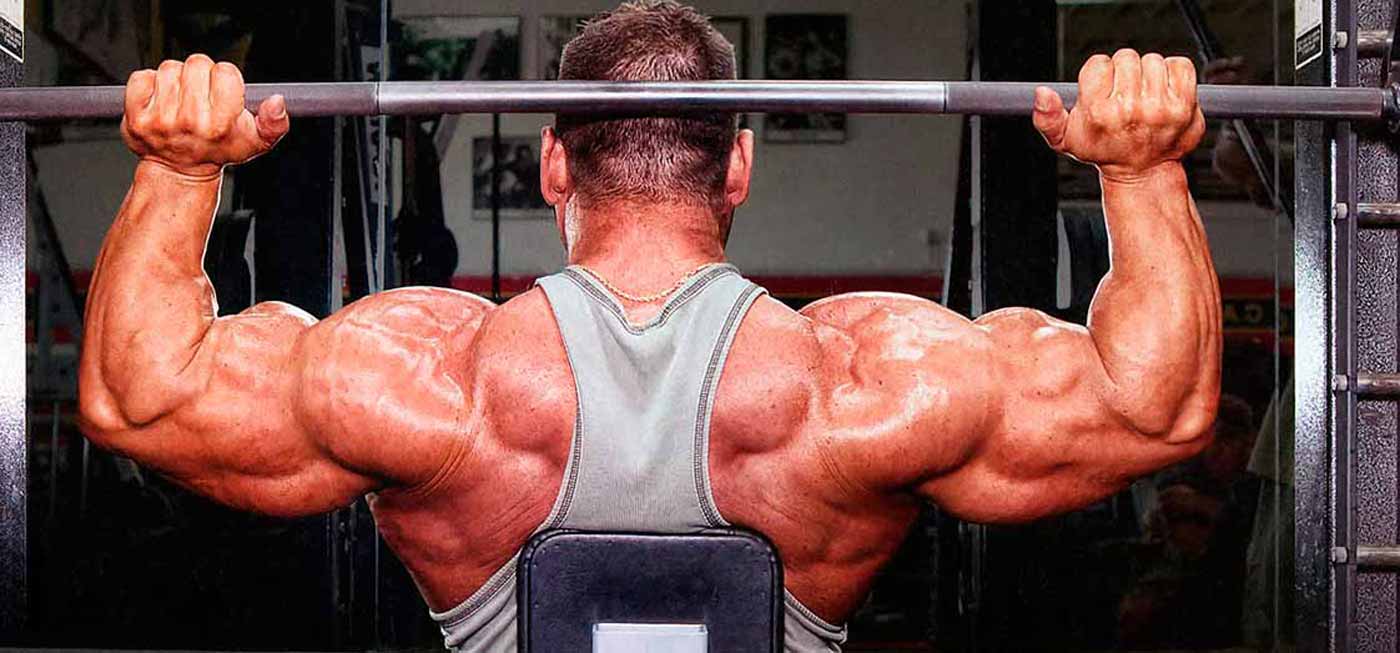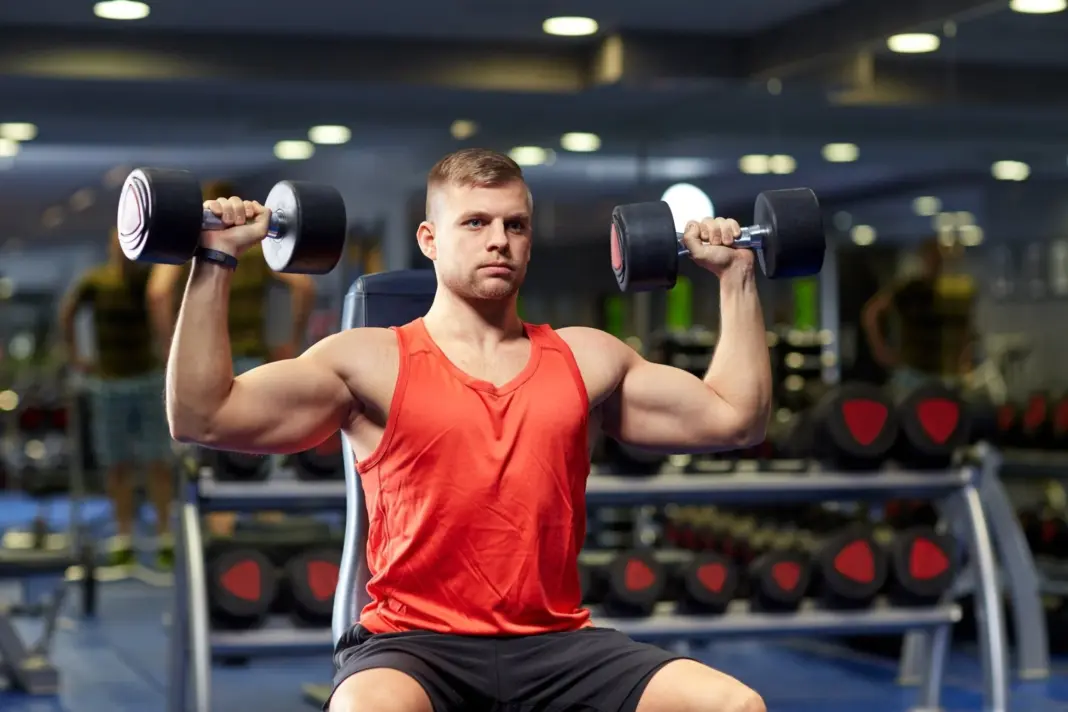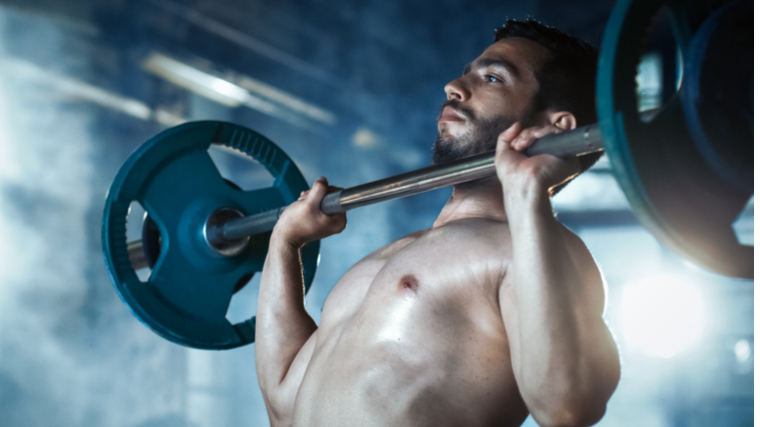Shoulder Workouts & Training Hub: Build Strong, 3D Delts
Ask any seasoned bodybuilder what makes a physique look complete, and the answer almost always comes back to shoulders.
Strong, round, well-developed delts are the difference between looking athletic and looking powerful. They add width to your frame, balance to your upper body, and stability to every pressing or pulling lift you perform.
Unfortunately, shoulders are also one of the most commonly underdeveloped or unbalanced muscle groups. Many lifters hammer their chest and arms, but give shoulders only an afterthought — resulting in flat delts, poor symmetry, and, often, nagging injuries.
As someone who’s lived under the bar for years, I can tell you this: shoulder training deserves the same level of precision as chest or back.
This hub will serve as your complete guide — covering shoulder anatomy, training philosophy, exercise selection, programming strategies, and specific workouts you can use to build shoulders that are big, balanced, and resilient.
Why Shoulder Training Matters
The 3D Look
Shoulders are what create the illusion of width. When your lateral delts flare out and your rear delts pop, your waist looks tighter and your chest looks bigger. This is the essence of the “V-taper” every bodybuilder chases.
Performance & Strength
Strong delts are essential for pressing strength — whether it’s bench, overhead, or incline press. They also stabilize the bar in Olympic lifts, support heavy rows, and contribute to overall athletic power. Neglect your delts, and your strength in other lifts will plateau.
Injury Prevention & Longevity
The shoulder is the most mobile — and therefore the most vulnerable — joint in the body. Imbalanced delt development can lead to shoulder roll, poor posture, and eventual rotator cuff injuries. Balanced training keeps your joints healthy and your lifting career long.
In short: Shoulders are not just about looks — they’re the foundation of both aesthetics and performance.
Anatomy of the Deltoids: The Three Heads
Before we dive into programming, let’s quickly break down the delt anatomy:
- Anterior Deltoid (Front Delt): Activated heavily during overhead presses, bench press, and front raises. Adds thickness from the side profile but can easily become overdeveloped due to chest work.
- Lateral Deltoid (Side Delt): The key to width. Best trained with lateral raises and variations. This head gives shoulders their round, capped look.
- Posterior Deltoid (Rear Delt): Critical for balance, posture, and symmetry. Often neglected, but responsible for depth and thickness from the back. Best trained with reverse flys, face pulls, and rear-dominant rows.
The golden rule: Train all three heads for complete, healthy, and aesthetic shoulders.
The Shoulder Training Blueprint
When designing a shoulder workout, think about balancing three categories:
- Pressing Movements (Strength & Mass)
- Overhead Press (barbell/dumbbell)
- Arnold Press
- Machine Shoulder Press
These moves let you handle the heaviest loads, building density and strength across the delts.
- Raising Movements (Shape & Symmetry)
- Lateral Raises (dumbbell, cable, machine)
- Front Raises
- Lean-Away Lateral Raises
These refine shoulder shape, focusing on lateral and anterior heads.
- Pulling Movements (Balance & Rear Delts)
- Face Pulls
- Rear Delt Fly (dumbbell/cable/machine)
- Wide-Grip Rows (rear delt emphasis)
Pulling variations ensure rear delts grow in proportion, preventing the “front-heavy” look.
Subcategories of Shoulder Training
To help you target your delts with precision, let’s break training into three focused hubs:
🔵 Front Delts (Anterior Deltoid)
- Strength foundation for all pressing movements.
- Overworked for many lifters due to bench obsession, so don’t overemphasize.
- Best moves: Overhead Press, Arnold Press, Front Raises.
👉 [Front Delt Training Guide: Pressing Power & Shoulder Frontline Strength]
🟡 Side Delts (Lateral Deltoid)
- The most important for aesthetics.
- Need high volume and variety to grow.
- Best moves: Lateral Raises, Cable Lateral Raises, Machine Lateral Raise.
👉 [Side Delt Training Guide: Building Wide, Capped Shoulders]
🔴 Rear Delts (Posterior Deltoid)
- Common weak point, but essential for balance.
- Best developed with strict isolation and moderate volume.
- Best moves: Reverse Pec Deck, Rear Delt Fly, Face Pulls.
👉 [Rear Delt Training Guide: Building Balanced & Powerful Shoulders]
Popular Shoulder Workouts
- Mass-Building Shoulder Workout (Beginner/Intermediate)
This workout builds a solid base of strength and size.
- Barbell Overhead Press – 4×6–8
- Dumbbell Lateral Raise – 4×12–15
- Dumbbell Arnold Press – 3×8–10
- Reverse Pec Deck – 3×12–15
- Face Pulls – 3×15–20
- Advanced Shoulder Specialization Program
For lifters chasing maximum hypertrophy and symmetry.
- Seated Dumbbell Overhead Press – 4×6–8
- Cable Lateral Raise – 4×12–15
- Rear Delt Fly (Incline Bench) – 4×15–20
- Arnold Press – 3×10
- Dumbbell Front Raise (Plate or Dumbbell) – 3×12–15
- Power Partials (Heavy Cheat Raises) – 2×25
- Shoulder Finisher Workouts (High-Rep Burnouts)
Perfect for pump work after a push day.
Giant Set:
- Dumbbell Lateral Raise – 15 reps
- Front Raise – 15 reps
- Rear Delt Fly – 15 reps
- Face Pull – 20 reps
Rest 60 seconds. Repeat 3–4 rounds.
Shoulder Training Tips
- Press + Raise + Pull = Complete Training
Don’t rely only on presses. Add raises for side delts and pulling work for rear delts.
- Use Multiple Angles
Vary your pressing (seated vs standing, barbell vs dumbbell) and your raises (dumbbell vs cable) to hit different fibers.
- Prioritize Weak Points
If your side delts lag, start with lateral raises. If your rear delts are flat, hit them first on back day.
- Mix Heavy & High-Rep Work
Compounds thrive in 6–10 rep ranges, while isolations shine in 12–20 reps. Use both for maximum size.
- Don’t Forget Recovery
Delts are heavily involved in chest and back training. Factor that into your weekly programming to avoid overuse.
Programming Strategy by Training Level
Beginners
- Train shoulders 2x per week with full-body or push-pull splits.
- Stick to one compound press + one isolation per session.
Intermediate Lifters
- Add a dedicated shoulder day, or combine with arms.
- 10–12 total weekly sets per head (front, side, rear).
Advanced Bodybuilders
- Specialize weak points: if side delts lag, give them priority work.
- Use advanced techniques: drop sets, partials, rest-pause, and supersets.
- Total weekly sets: 15–18+ per head.
Practical Takeaways
- Strong, round shoulders are the hallmark of a balanced physique.
- Train all three heads — front, side, and rear — with presses, raises, and pulls.
- Use variety: free weights for raw power, cables for constant tension, machines for stability and volume.
- Adjust programming to your weak points: don’t be afraid to start sessions with side or rear delts.
- Progress both load (on presses) and volume (on isolations) for complete delt development.
Conclusion
Well-developed shoulders are more than just “the finishing touch” to a physique. They’re the cornerstone of symmetry, width, and pressing power.
If you neglect them, you’ll struggle with imbalances, stalled lifts, and a physique that looks incomplete.
But if you give your shoulders the attention they deserve—balancing compounds with isolations, targeting all three heads, and programming with progression—you’ll unlock the round, 3D delts that make your upper body stand out on stage or in the gym.
Train them with intent, prioritize balance, and your shoulders will finally grow into the powerhouse they’re meant to be.






